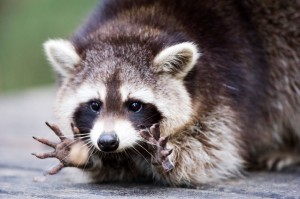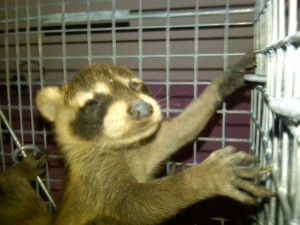Life’s challenges are not supposed to paralyze you, they’re supposed to help you discover who you are. -Bernice Johnson Reagon
The Ripple Effect of Wildlife In Your Home
 Wildlife nuisances encroaching on your commercial or residential properties pose many risks. Once you have a raccoon in your attic, a squirrel in your chimney, a bat in your soffits or a skunk under your deck , the chance of you experiencing a ripple effect of wildlife damage increases, but we at Wildlife Busters are here to help. Understanding some of the risks factors associated with wildlife in your home and the damage they may create, is important when making decisions on how to humanely resolve your wildlife issue.
Wildlife nuisances encroaching on your commercial or residential properties pose many risks. Once you have a raccoon in your attic, a squirrel in your chimney, a bat in your soffits or a skunk under your deck , the chance of you experiencing a ripple effect of wildlife damage increases, but we at Wildlife Busters are here to help. Understanding some of the risks factors associated with wildlife in your home and the damage they may create, is important when making decisions on how to humanely resolve your wildlife issue.
What is the ripple effect, you may ask? Once you have one issue with wildlife in your home, it tends to spiral into a larger issue or multiple issues if not addressed properly. Let’s suppose you have a skunk hunkering down under your deck. You think, “no big deal, maybe he/she is just passing through.” That could be the case or since it’s mating season for skunks, it could be the beginning of a multigenerational den if not managed correctly. Or perhaps you have had issues with squirrels in your attic that you or a friend decided to take care of except you didn’t realize the importance of decontaminating and sanitizing the area or sealing up the initial entrance point. Now a raccoon is passing by and notices the wonderful smell of wildlife and wait, there is an entrance point that he/she notices. Oops, almost forgot to mention that the raccoon will more than likely create more damage when entering through the original hole created by the squirrel. Then the next thing you know, you have a family of raccoons nesting and birthing in your attic. Hence, the ripple effect.
Raccoons, skunks and bats,the primary Vector Species of the Hudson Valley!
Homeowners express various concerns when dealing with wildlife in their homes or on their property, but the one that seems to cause the most alarm is rabies. Racoons, skunks and bats are primary Vector species in the Hudson Valley, which means they can both carry and transmit rabies. As carriers, they do not always show signs of the disease. Please note, that while not as prevaliant or reported, foxes and groundhogs may also carry the disease—so always be aware when confronted with a human/wildlife conflict.
How Do I know If an Animal Has Rabies?
There are some basic signs that you can look for when trying to understand whether a wildlife nuisance is sick with rabies. Rabid animals may foam at the mouth or drool, appear disoriented and confused, have scruffy fur, discharge from the eyes, make loud crying noises and/or have a difficult time walking. Their hind legs may become paralyzed and/or they may walk in circles. Very often, specifically with raccoons, people express concern because the animal is out during the day and/or because the animal is aggressive, but this does not mean they necessarily have rabies. Raccoons out during the daylight may also be nursing females and hence foraging for food anytime of day searching for the extra calories to nourish her kits.
It’s winter now, so is there a risk of having an animal with rabies in my house?
Raccoons mainly breed during January and February. Their gestation cycle lasts 60 to 64 days and they will typically delivery a litter of one to six young. So as we all hunker down for the cold winter months here in the Greater Hudson Valley, raccoons are looking for a safe haven to raise their young. Raccoons that enter your home to establish dens to deliver and raise their young may carry rabies, but they may also be carriers of raccoon roundworm. Racoon roundworm is caused by a parasite that lives in the intestines of raccoons. It is easily transmitted through direct contact with feces, but can also be transmitted by coming into contact with contaminated areas. Children have the greatest risk of contracting raccoon roundworm because of their tendency to put their hands in their mouths. Aside from the raccoon roundworm, raccoons also carry fleas and ticks, which are hosts to a number of diseases that are serious threats to humans.
What other risk factors are there to having wildlife in my home?

Raccoons are great climbers and instinctually seek high grounds to establish their dens for safety. They can easily climb onto your roof and find a safe haven in your chimney, roof vents, attic fans, soffits and chimneys. Raccoons have extremely dexterous front paws and to enter your home, they will tear roofing shingles, siding, fascia, and soffits. Once they have entered your home, they bring with them the potential to cause interior damage as well and increase the risk factors for disease transmission. We have encountered raccoon infestations that have caused severe damage to insulation by using it as a latrine and/or by the raccoon tearing it out and clogging heating and cooling vents. This is extremely dangerous as it increases the risk for electrical fires. We have also seen situations where they have caused severe damage to electrical wires and plumbing lines, which in turn is a huge financial burden to homeowners.
I have wildlife in my house, what do I do now?
Wildlife Busters is here to help. We believe that the best approach to effectively and humanly resolving a human-wildlife conflict is to begin with a site inspection. This allows us to thoroughly examine the interior and exterior of your home, while gathering information from the property owner so that we may offer you an individualized plan to best deal with your wildlife nuisance. We offer trapping and removal services, but focus our attention on Wildlife exclusion work, which is identifying how the animals are accessing your commercial or residential property and then providing various materials to seal and close the access points. We also provide decontamination and sanitizing services to remove fire and health risks. We work with the property owner throughout our process to ensure that we are resolving the issue and protecting your home.
If you are experiencing a nuisance wildlife issue, whether you need squirrel removal, raccoon removal, woodchuck removal, skunk removal, bat removal give Wildlife Busters® a call toll free at 855-945-1212 and we resolve your wildlife management issue professionally, efficiently and humanely. www.WildlifeBusters.com or www.TheBirdBusters.com
Think Spring Savings
February & March2013
We are happy to share with you our Think Spring Savings! Enjoy a 10% discount on Site Inspections completed between February and March 31st. Let us know that you read it in our newsletter or like us on facebook and experience the Think Spring 10% discount! There are so many ways to save!
Community Wildlife Programs and Upcoming Events
Mohonk Preserve
SRBP Lecture Series:The Catskills/Shawangunk Connection February 21, 7:00-8:30 @ SUNY New Paltz Lecture Center Rm 102; West Trapps Trailhead Snowshoe Hike Feb 23, 10:00-12:00; Thursday Tales at Ten Storey Time at the Mohonk Preserve; SRBP Lecture Series: Eel Migration in the Hudson Valley February 28, 7:00-8:30 @ SUNY New Paltz Lecture Center Rm 102.
Hudson Highlands Nature Museum
Mastodons-Ice Age to Discovery Open Friday, Saturday, Sunday 12:00-4:00; PreSchool Open House February 26th 3:30-6:00; Maple Sugar Festival March 2nd, 10:30 – 3:00.
Weinberg Nature Center
Animal Adventures the 2nd & 4th Saturdays of every month 11:00 a.m. pre-registration is required; Discovery Walk February 28th 12:15 pre-registration is required; Winter Detectives February 22nd 10:30-2:00 fees required.
The Bear Mountain Zoo
for some Wildlife fun all year round visit The Bear Mountain Zoo located in the Bear Mountain State Park, NY
Fun Animal Facts
Raccoons have a large array of vocalizations. They purr, whistle, growl, hiss, scream and even whine.
Raccoons, squirrels and skunks do not hibernate. During extremely cold periods they have been known to sleep for long periods, but do not hibernate.
A skunk can spray the yellow oily foam (sulfuric acid) from its musk as far as 10 to 15 feet.


 Receive FREE wildlife Tips!
Receive FREE wildlife Tips!
